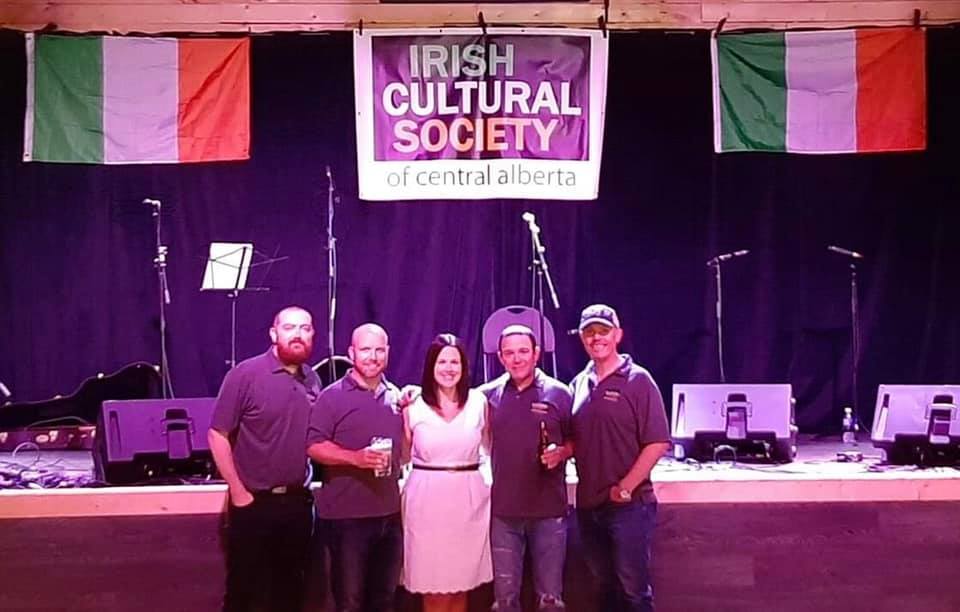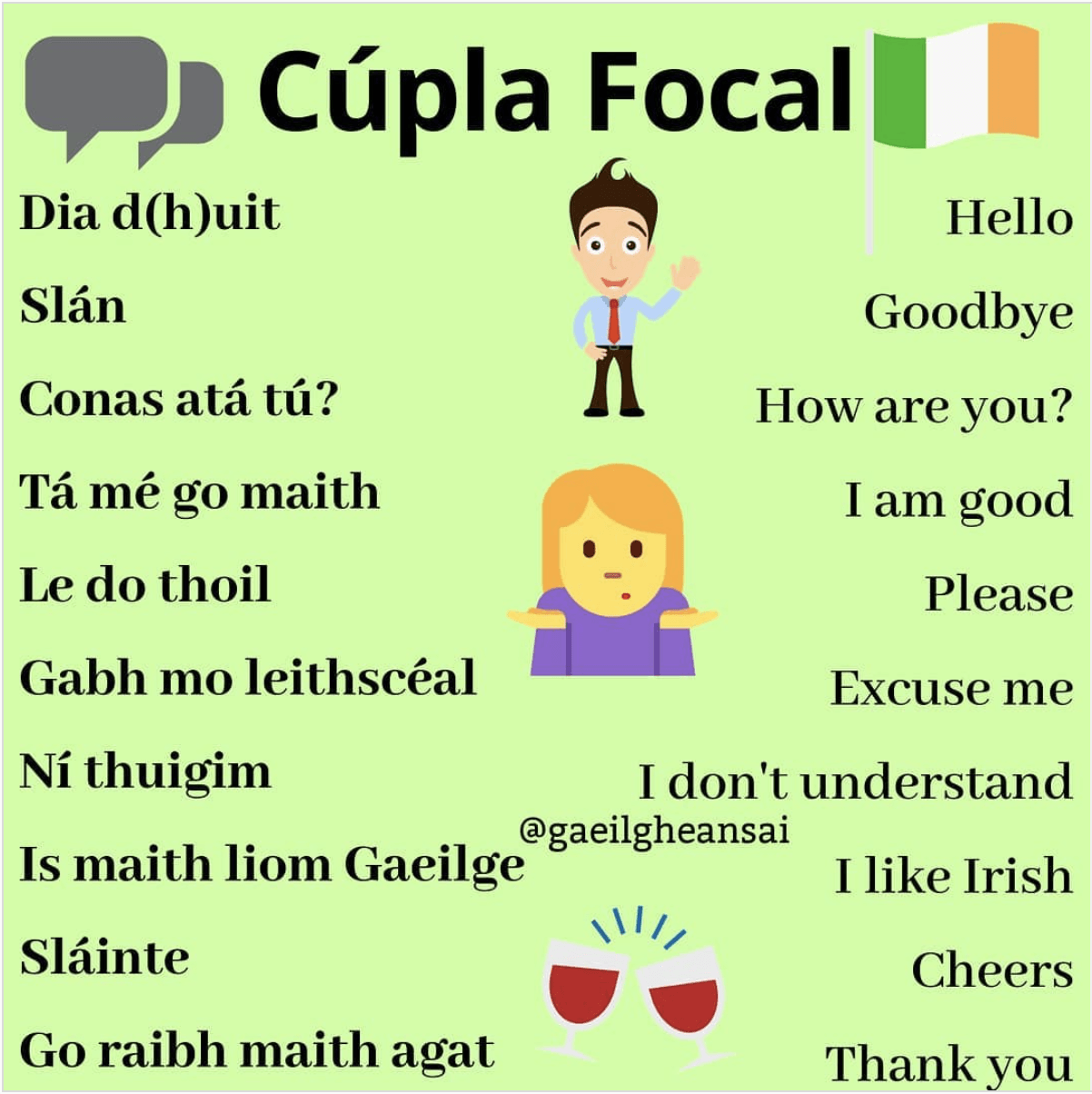A Vision Q&A with the Irish Cultural Society of Central Alberta
Lá Fhéile Pádraig sona duit — Happy St. Patrick's Day to you
"So many areas of Irish heritage are intertwined and work all together to make the Irish who they are, no matter where they are."
In celebration of St. Patrick’s Day, we reached out to the Irish Cultural Society of Central Alberta to learn a bit more about Irish culture in this province and on the Emerald Isle. Michelle Gorman, the society’s secretary, was kind enough to share her insights into St. Patrick’s Day traditions, the history of Irish-Albertans and some lesser known facts about Irish culture. Here’s what she had to say:
Can you tell us a bit about the history of Irish-Albertans?
The earliest known people from Ireland living in Alberta were ranchers near Fort Macleod in the 1870s and 1880s. By 1916, Alberta had around 6,500 Irish immigrants.
The Canadian government promoted the Western Prairies as the main area of settlement and gave new settlers 160 acres of land for free. That’s an unfathomable amount to someone from Ireland—the farm my Grandfather grew up on was only 20 acres!
Settlers of Irish origin in Canada maintained a unique position between the English and French: while Ireland and England shared a common language, Irish and French settlers shared a religion…and an ancient dislike for the English.
Emigration from Ireland definitely increased during times of political or economic unrest; with surges of Irish people coming to Alberta during the Irish revolutionary period from 1910 to 1921, post World War II, and during the economic recessions in the 1980s and late 2000s.
In Irish history, what’s the origin of St. Patrick’s Day?
The Irish for St. Patrick’s Day is Lá Fhéile Pádraig, meaning "the Day of the Festival of Patrick.” It’s a cultural and religious celebration held on March 17th, the traditional death date of Saint Patrick, the patron saint of Ireland.
Saint Patrick was born about 385 AD in the United Kingdom. When he was 16 years old, he was kidnapped and forced to become a slave in Ireland. After six years of being a shepherd, he finally escaped to France and became a priest, then later a bishop. When he was about 60 years old, Saint Patrick returned to Ireland to spread the Christian word. He used the shamrock as a symbol to explain the concept of God (Father, Son and Holy Spirit).
Over the years, St. Patrick’s Day evolved from being a religious holiday into a celebration of all things Irish. Until the 1970s, all of the pubs and bars in Ireland were actually closed on March 17th.
What are some authentic St. Patrick’s Day traditions?
Most people will attend a parade, festival or celebration of some sort within their local community. They usually have entertainment, face-painting for kids, etc.
St. Patrick’s Day is a Holy Day, so those people who attend mass will go in the morning. As a child I remember the Priest blessing a bowl of shamrock and everyone would get a little bunch of real shamrock to wear.
St. Patrick’s Day badges and buttons are very popular in Ireland. We wear green—and white and gold—but mostly green. If you’re planning on going to a pub, you need to be there by noon. Pubs and bars in Ireland are packed like nothing you could imagine on St. Patrick’s Day. There’s generally lots of live music and entertainment.
Can you share some facts about Irish culture and St. Patrick’s Day that may not be well-known?
Irelands national symbol is the harp, not the shamrock as many people think. And Irish people do not drink green beer!
The easiest way I can explain St. Patrick’s Day to people is that it’s our version of Canada Day. It’s Ireland’s national holiday, there is no Ireland Day. It’s a day to feel proud to be Irish and explore facts and information about our little island.
There is no St. Patty. Overseas, it seems the name Patty is often more common than Paddy. You can say St. Patrick’s Day, St. Paddy’s Day, Patrick’s Day or Paddy’s Day—but please, please, please not Patty!
Ireland is home to the European headquarters for Google, Instagram, Airbnb, PayPal, Indeed, Twitter, Ebay and LinkedIn. Dublin is often referred to as the Silicon Valley of Europe. Ireland is also home to 24 of the world’s top biotech and pharmaceutical companies, such as: Johnson and Johnson, Roche, Pfizer, Novartis, GlaxoSmithKline, Bayer and Stryker.
In your opinion, what is it about Irish heritage that’s special?
So many areas of Irish heritage are intertwined and work all together to make the Irish who they are, no matter where they are; a sense of family, a sense of community, an abiding love of the land, a love of laughter, our rebellious streak, our poets, writers, storytellers, musicians and singers, our hospitality and our food.
Today, about 70 million people claim Irish heritage or ancestry worldwide, according to the Irish government—quite a number for an island of only 6 million people!
About Michelle Gorman
Michelle was born and raised in County Cork on the south coast of Ireland. Michelle’s a true Irish-Albertan; she moved to Canada with her husband in 2009 and both of their children were born in Central Alberta. They’ve attained their Canadian citizenship and their family is here to stay. They love calling Alberta home.
About the Irish Cultural Society of Central Alberta
In 2008, the Red Deer Gaelic Athletic Association was formed to facilitate Irish sports in Central Alberta. This allowed the Red Deer team ‘Eire Og’ to play in tournaments across Western Canada. In recent years, the number of individuals wanting to play Irish sport in Central Alberta has lessened to the point where there hasn’t been a team for the past few years. However, there has been an increase in individuals and families with young children seeking to maintain their Irish culture and heritage within the region.
In January 2019, the decision was made to change the focus of the society to encompass all things Irish. This prompted the decision to change the name to the Irish Cultural Society of Central Alberta. Anyone with an interest in Irish culture is welcome to attend ICSCA events.
Their mission is to foster a community where people with an interest in Irish arts, culture and heritage can come together to respectfully collaborate, explore, and make recommendations to enhance the identity of the Irish and Irish-Canadian people in Central Alberta.
In 2019, they hosted a number of family friendly events: a children’s Christmas party, a summer BBQ, a large St. Patrick’s Day celebration at Bower Kin Hall and a sold out Irish Traditional Night at Bo’s Bar and Stage. They also liaised with the Red Deer Irish Dance Academy to financially support two terms of Irish dancing lessons.
This year, their 2020 goals are to continue supporting the Irish dancing lessons and to host day camps for kids to explore Irish sports, language and music. They recently hosted another Irish Traditional night at Bo’s and are planning another large event for August. They’re also hoping to host some smaller impromptu events as opportunities arise.
Irish Cultural Society of Central Alberta
Facebook: https://www.facebook.com/irish.cultural.soc.central.ab/
Twitter: https://twitter.com/IrishAlberta
Photos courtesy of Michelle Gorman and the Irish Cultural Society of Central Alberta.






